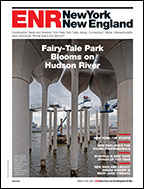Stirred to action by 29 construction fatalities last year, New York City announced new measures Feb. 7 to protect workers from falls from suspended scaffolds by beefing up inspections, improving safety practices by contractors and assuring that Spanish-speaking workers aren’t endangered because of gaps in communication.
|
Mayor Michael R. Bloomberg announced measures developed by a task force that included employers. Its recommendations will be enacted through new laws submitted to the City Council and through new city policies. Representatives of the U.S. Labor Dept. also worked with the city in developing the new measures.
More than half of the suspended scaffold accidents in the city last year involved scaffolds hung from C-hooks. Following adoption of a new law by the City Council, the city will now require that it be notified prior to their use or installation. A second measure submitted to the City Council would increase penalties for the violation of regulations governing licensed riggers and others who supervise suspended scaffolds. A third bill would require daily written inspections by a trained site supervisor rather than by the user of the suspended scaffold as currently required.
“I know a lot of people will say, ‘oh, more regulation,’ but there were 29 lives lost last year,” Bloomberg said at a City Hall press conference.
To increase inspections, the city will create a scaffold safety unit within its Dept. of Buildings. Additional inspectors are being hired.
City contractors served on the scaffold task force and helped create the city’s new safety strategy.
New York contractors enacted self-imposed site safety guidelines earlier this year.
The 10-point Build Safe NYC program was originally announced at a 2005 safety conference by CEOs of the city’s largest contractors. The Building Trades Employers’ Association, a New York-based group that represents 1,200 contractors, and the 56 affiliates of the Building and Construction Trades Council of Greater New York, helped to develop the guidelines. It underwent an extensive year-long review by construction managers and public officials.
 Related Links:
Related Links: 
